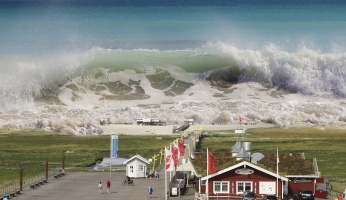Hunting Moose: A Complete Guide
 Hunting Moose: A Complete Guide
thegearhunt.com
Hunting Moose: A Complete Guide
thegearhunt.com
Bull moose appear as if they were designed by some sort of committee, one that was ad hoc. He has a bulbous nose that is incredibly large, coupled with ears that are so large that they resemble those of a donkey. They are the largest antlered creature on the planet, and sometimes people wonder how they even manage to stand on legs that are long and quite spindly. On the other hand, it might be a bit difficult for them to fall over because of their hooves that are large enough to be considered snowshoe sized! He also has a bell that is very distinctive, that would be the beard like skin located beneath his chin. With all of that, it is easy to believe that this poor creature is lampooned quite often.
However, if you spend a couple of days trying to hunt him in the forested habitat he is native to, you will lean soon enough that this animal is truly a design that is pure function over form. If you lose track of the breeze for a split second, he will know exactly where you are. If you accidentally happen to step on a twig, his ears will be like a GPS tracking signal to your location. If he decides to run from you, you will quickly be left behind. Those long legs of his will take him over obstacles and deadfall with a sense of grace that ballerinas long for, and at a pace that is unbeatable. His hooves will splay to get him across soppy ground that will soon have you mired in the muck.
Bull moose offer one of the most underrated challenges of hunting in Canada. Few people who attempt to hunt them will be able to fill their tags consistently. For that reason, it is always a good thing to search for an advantage if you plan to pursue this giant beast. Through the years, seasoned hunters pick up a few best practices. We will discuss some of those here today.
Forget Where’s Waldo. Where is Bullwinkle?
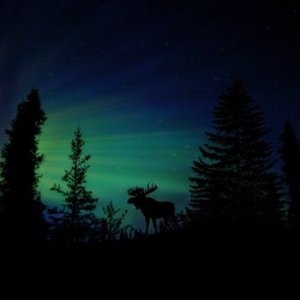 There isn’t much sense to hunting moose where there are just a few of them, if there are any at all. That is quite obvious. In order to maximize your chances, you need to hunt the moose where there are plenty of them. These creatures are generally solitary and can be a challenge to locate. This is especially true during the season they are hunted and when they feel as if they are under pressure. That is the reason that very few other types of hunts depend so much on planning and scouting effectively as a moose hunt does.
There isn’t much sense to hunting moose where there are just a few of them, if there are any at all. That is quite obvious. In order to maximize your chances, you need to hunt the moose where there are plenty of them. These creatures are generally solitary and can be a challenge to locate. This is especially true during the season they are hunted and when they feel as if they are under pressure. That is the reason that very few other types of hunts depend so much on planning and scouting effectively as a moose hunt does.
If you are planning on doing your due diligence, you need to begin with harvest and population data. This information is typically available through most of the natural resources departments in the areas where they are hunted. Take a look at the data from censuses and keep an eye on things like the ratios of bulls to cows, and the total numbers of the moose. Data on harvests can be misleading as well as meaningful because the moose that are killed can be related to accessibility more than the total number of moose. If this information happens to be available, look at the rate of hunter success as an indicator of opportunity that can be valuable.
Virtual Scouting
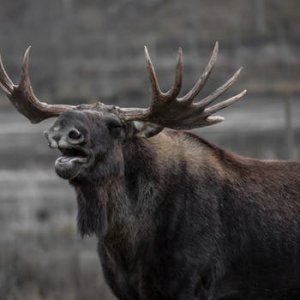 After you have chosen an area for hunting, it will be time to head to the aerial photography and topographical maps of that area. Moose tend to remain near sources of water, so you might want to concentrate your mapping efforts on areas near river valleys or lakes. The flats that are located along riverbanks, beaver dams, deltas, and lake shores often will support things like dogwood, willow, alder, and other winter and fall favorites of the moose. You might also want to take a close look at the contour intervals that are adjacent to any areas you might be considering. If they are too steep, the shrubs that moose seem to prefer will more than likely not grow there. If those areas are too flat, you might come to find that wet habitats and muskeg will make your travel quite difficult, if it is possible at all.
After you have chosen an area for hunting, it will be time to head to the aerial photography and topographical maps of that area. Moose tend to remain near sources of water, so you might want to concentrate your mapping efforts on areas near river valleys or lakes. The flats that are located along riverbanks, beaver dams, deltas, and lake shores often will support things like dogwood, willow, alder, and other winter and fall favorites of the moose. You might also want to take a close look at the contour intervals that are adjacent to any areas you might be considering. If they are too steep, the shrubs that moose seem to prefer will more than likely not grow there. If those areas are too flat, you might come to find that wet habitats and muskeg will make your travel quite difficult, if it is possible at all.
After you have narrowed it down to a few locations, turn to aerial photographs. Those that have scales of less than 1:40,000 should be able to provide you with the detail you will need in order to identify the types of vegetation. You should look for deciduous tracts that are broad and can provide the moose with food. That being said, don’t just ignore those dense stands of coniferous flora as these can provide the moose with thermal covering when the months are cold and shade to cool them when it isn’t. Known cut blocks and burns are other areas to pay attention to because both of these can support thriving areas of the shrubs favored by the moose. These sites that regenerate will often provide moose with 15 years of foraging before it becomes old enough to be distasteful for the moose.
Seek Out the Pros
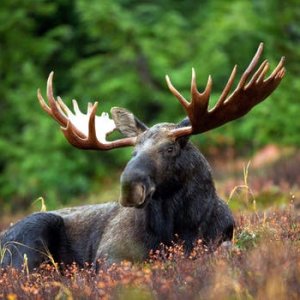 You might want to have a conversation with pilots, forestry workers, trappers, conservation officers, and biologists who a have familiarity with the areas you are considering. These professionals will know things about those areas that nobody else will, and they can often be quite forthcoming when it comes to critical information hunters need when they are approached in a manner that is respectful. When you visit them, have your maps with you, or just pick up the phone and call them. This might be the best form of research you can do.
You might want to have a conversation with pilots, forestry workers, trappers, conservation officers, and biologists who a have familiarity with the areas you are considering. These professionals will know things about those areas that nobody else will, and they can often be quite forthcoming when it comes to critical information hunters need when they are approached in a manner that is respectful. When you visit them, have your maps with you, or just pick up the phone and call them. This might be the best form of research you can do.
Calling in a Rut
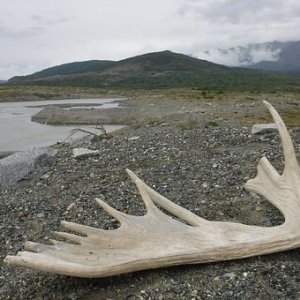 There can be few experiences in hunting that can match the excitement of calling a bull moose who is just a scant few feet from you. Putting that aside though, calling can often be the best way for you to hunt the bulls during a rut, especially when you are in terrain that is relatively flat as this type of terrain can preclude the chance for spot and stalk hunting effectively. Maybe you have even heard a story or two about randy bulls that have responded to the sound of an axe splitting some wood or even a train whistle. 😊 Some people might choose to believe these stories while others take them as ‘old hunters’ tales’. On the other hand, you don’t need to be a perfect mimic to call a bull when they are looking for a receptive mate.
There can be few experiences in hunting that can match the excitement of calling a bull moose who is just a scant few feet from you. Putting that aside though, calling can often be the best way for you to hunt the bulls during a rut, especially when you are in terrain that is relatively flat as this type of terrain can preclude the chance for spot and stalk hunting effectively. Maybe you have even heard a story or two about randy bulls that have responded to the sound of an axe splitting some wood or even a train whistle. 😊 Some people might choose to believe these stories while others take them as ‘old hunters’ tales’. On the other hand, you don’t need to be a perfect mimic to call a bull when they are looking for a receptive mate.
Call Them All
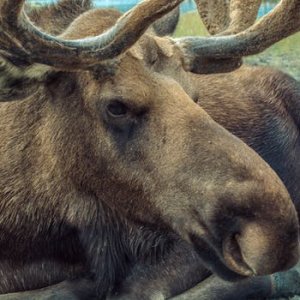 There has been much said about the pros and cons when it comes to cow versus bull calling. In my personal experience, cow calling seems to be more effective, but you will have to try it and see what works best for you. The best areas for calling seem to be in places that are relatively flat, or habitats that are thickly wooded. These are both areas where the bull has to move in closer to see which animal is making all of the noise. In areas where moose are plentiful, you might want to choose areas to call that will attract both cows and bulls – meaning areas that have a good quantity of forage for them. You also might want to be near things like rivers, beaver ponds, and lakes or other sources of water. This is also critical.
There has been much said about the pros and cons when it comes to cow versus bull calling. In my personal experience, cow calling seems to be more effective, but you will have to try it and see what works best for you. The best areas for calling seem to be in places that are relatively flat, or habitats that are thickly wooded. These are both areas where the bull has to move in closer to see which animal is making all of the noise. In areas where moose are plentiful, you might want to choose areas to call that will attract both cows and bulls – meaning areas that have a good quantity of forage for them. You also might want to be near things like rivers, beaver ponds, and lakes or other sources of water. This is also critical.
Call ‘Em Right
When it comes to calling moose, there are 2 particular deal breakers. One is to not manage the wind, and the other is in making sounds that just aren’t natural. Yes, their raging hormones can leave the bull moose a bit less suspicious than they normally are, but you still have to keep in mind that their 2 primary defenses are their sense of hearing and smell. If you compromise either of these, the moose will leave in a hurry and when this happens, they won’t come back.
There will also be times when the bull responds but won’t commit to going those scant remaining yards. In instances such as this, you might switch to a softer bull call, and this might make him react by closing that gap, due to it making him think that there is another bull staking his claim on a cow. Soft bull calls won’t scare the smaller bulls away, and it can bring the larger ones right out into the open.
When it comes to the sequencing and timing of your calls, there aren’t any sort of rules that are specific. That being said, calling in the mornings and in the early evening or late afternoon seems to get more responses that calling in the middle of the day. If you are in a good location for calling, you might want to call every 20 minutes or so for as much as 2 hours. If you aren’t too certain about your area, try calling every 10 minutes for about an hour and if you don’t get any sort of response, move on to the next location.
Patience Is a Virtue
Patience is critical, and so is staying on guard. Sometimes a bull will just steam right on in like a freight train with a lot of hoopla and noise, but others can be as quiet as a mouse. If you aren’t being vigilant, they can discover you aren’t a cow and will disappear quicker than lightning.
If you happen to be hunting in a habitat that has been proven to have moose, it might do a world of good to walk a bit to find rutting pits. A rutting pit is a smallish scrape that bulls tend to dig into using their front legs. Then, they will urinate regularly and copiously into it. Once the bull stirs the urine and soil up into a big mess, he will then splash it on his antlers and bell. Some of them will even lay down and then roll in the mixture! After doing this, he will rub smaller trees with the lathered bell and antlers in order to advertise his presence and prowess to both other bulls and to cows, as many antlered creatures do. Moose cows get all excited by this scent of urine and it will lure them to the scrapes in search of a moose to breed with.
If you are lucky enough to locate a rutting pit that is active – you will smell it if you do – it can be a good idea to hunt in that area. If the conditions are favorable, you might even want to call in the area. Moose, like white tailed bucks, will create more than one rutting pit. They will then go back to them with a regularity that can be unpredictable, depending on how large their breeding territory is and how often they encounter the cows.
Hunting Post Rut
If you happened to have missed your moose while the rut was going on, you might want to think about hunting after it ends. You just need to know that your strategies will need to change in order for you to have any chance at success. If you are hunting for bulls, they will travel much less than they did during the rut because they need to recover from the stresses and exertions of breeding and will feed quite heavily. This means that you will need to find even the most remote areas that have the most of the foods the moose prefer. If there is snow on the ground, you can always try to track them. If you locate fresh tracks, you will be able to know that what you seek is not too far away.
Try Not to Die While You are in the Hole
When it comes to hunting for moose, the bottom line is that you should take a page from some of the tactics that are used by tournament fishermen. The fact is that if what you are doing is not showing any promising signs of results, don’t stick with it. Move on and change whatever your strategy is to try to make something, anything, happen. Regardless of anything else, you might just find a new area for hunting and a few innovative tricks for locating your moose in the process.
Sources
- YouTube, Hunting the Moose – How to Survive the Long Dark
- Outdoor Life, How to Hunt Everything: Moose
- Outdoors International, Moose Hunting Facts and How to Choose Where to Hunt Moose






